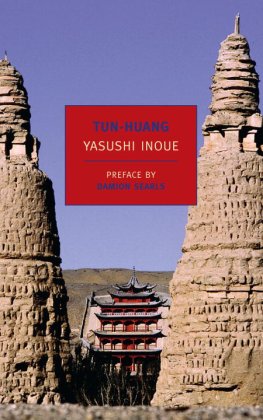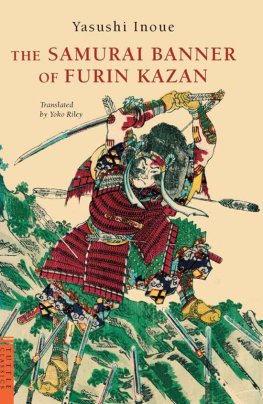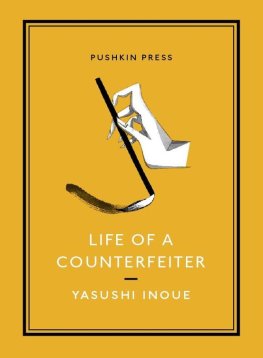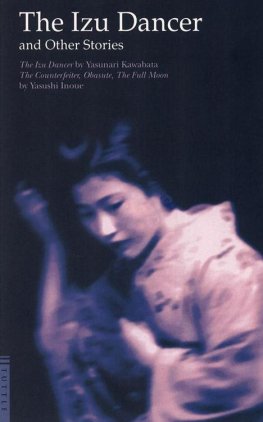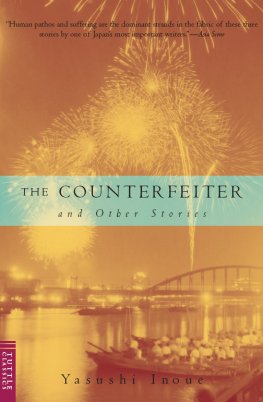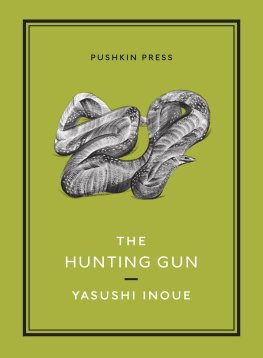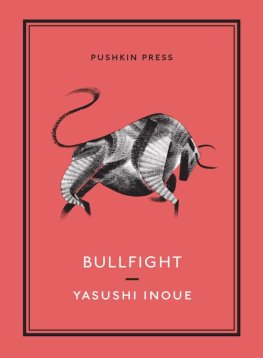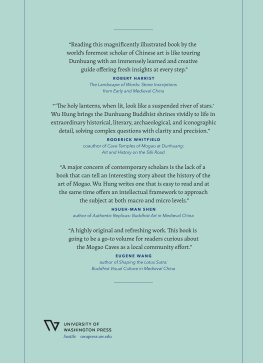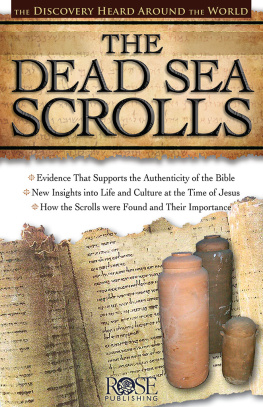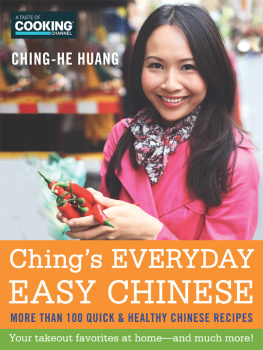YASUSHI INOUE (19071991) was born on Hokkaid, Japans northernmost island, the eldest child of an army medical officer. After a youth devoted to poetry and judo, Inoue sat, unsuccessfully, for the entrance exam to the Kyushu Imperial University Medical School. He would go on to study philosophy and literature at Kyoto Imperial University, writing his thesis on Paul Valry. In 1935, newly married and with an infant daughter, Inoue became an arts reporter for the Osaka edition of the Mainichi News. Following the Second World War, during which he briefly served in north China, he published two short novels, The Hunting Gun and The Bullfight (winner of the Akutagawa Prize for literature). In 1951 Inoue resigned from the newspaper and devoted himself to literature, becoming a best-selling and tremendously prolific author in multiple genres. Among his books translated into English are The Hunting Gun, The Roof Tile of Tempy, and The Blue Wolf: A Novel of the Life of Chinggis Khan. In 1976 the emperor of Japan presented Inoue with the Order of Culture, the highest honor granted for artistic merit in Japan.
JEAN ODA MOY was born in Washington State and spent her early years in Seattle, moving to Japan shortly before the outbreak of World War II. She is also the translator of Yasushi Inoues Chronicle of My Mother and Shirobamba: A Childhood In Old Japan.
DAMION SEARLS is the author of What We Were Doing and Where We Were Going and an award-winning translator, most recently of Rainer Maria Rilkes The Inner Sky: Poems, Notes, Dreams, Jon Fosses Aliss at the Fire, and Hans Keilsons Comedy in a Minor Key. NYRB Classics has published his abridged edition of Henry David Thoreaus Journal and will publish his translations of the Dutch writer Nescios short stories and Andr Gides Marshlands.
Yasushi Inoue was one of the most popular and critically acclaimed Japanese writers of the twentieth century winner of every major Japanese prize, a perennial Nobel candidate, his books made into movies for more than half a century and widely translated. Certainly no Japanese writer between Natsume Soseki and Haruki Murakami, in my view, including Japans two excellent Nobel Prize winners, gives such intense and consistent literary pleasure. In English, though, he has never even attained the status of being rediscovered every decade or two. A university press published a retranslation of The Blue Wolf, Inoues novel about Genghis Khan that was the basis for the recent blockbuster movie Genghis, in 2007, and before that was The Samurai Banner of Furin Kazan (basis for a 1969 movie starring Toshiro Mifune) in an almost unreadable translation in 2005thats been pretty much it in recent years.
His Internet presence in English is minimal too, though it does reveal how much more of his work has been translated into other European languages. One happily hunts through what there is and pieces together what one can. The English translation of Inoues autobiographical novel Shirobamba is only the first half of the original, but the second half exists in French, as Ksaku; the novella that launched his career, The Bullfight, is untranslated in English but available in French and German. One translators introduction says that Inoue went to the United States in 1964 to research what he personally believes will be his magnum opus, a multi-volume treatment of first, second, and third generation Japanese abroad, particularly in the United States, then a preface mentions traveling to San Francisco in 1964 to do research for a novel called The Ocean (Wadatsumi); a 1975 introduction says that Inoue is currently working on Wadatsumi, a historical novel of epic proportions; and the note in a 1985 anthology at last mentions Wadatsumi (God of the Sea, 1977), a detailed study of Japanese emigration to the United Statesso he finished it, and there the trail grows cold, for now.1
I mention this amateurs lovers treasure hunt because its delights are Inoue-ish delights, present in the books themselves. The main character of A Voice in the Night is an amateur expert on the poems from the eighth-century anthology Manyoshu; in Death, Love, and the Waves, the main character brings the thirteenth-century Journey of William of Rubruck to the Eastern Parts of the World, in the English translation from 1900, to finish reading before the suicide he has planned. The Roof Tile of Tempy, like Tun-huang though set a few centuries earlier, has beautiful descriptions of monks who copy out Buddhist scriptures. In Black Tide, a retired schoolteacher has spent his life writing a cultural history of color in Japan, rediscovering and re-creating the old materials and methods so as to bring to life the colors of the past as they really looked:
To understand the ancient Japanese peoples spiritual and psychological relationship to color in the broadest sense, to understand the inner lives of the men and women of the past and the social mentality of the time it was absolutely essential to have a concrete sense of the ancient colors, and there was obviously only one way to do it: manufacture once again the hues of the old colors using the dyeing techniques of the past.
After some forty years of work, the schoolteacher has finished his studies and dyed enough silk to tip swatches of all the colors including the legendary, forbidden Hajizome, like the rays of the sun as it crosses the meridianinto five hundred copies of his three-volume work, if he can get it printed in the tight postwar years.2 Inoue himself as a historical novelist is well-known for his thorough research he is said to have climbed Mount Hodaka four times to gather material for his novel about mountain climbing, The Ice Wall. In the authors preface below, he describes his five years of researching Tun-huang as a very satisfying time.
Yasushi Inoue, the oldest son of an army medical officer, was born in 1907 in northern Japan but grew up on the Izu Peninsula on the southern coast, the bucolic setting of many of his stories. He was raised by his grandmother Kano, in a separate house from his parents in fact, Kano was his mothers grandfathers mistress, and the old man had arranged for Kano to adopt his oldest granddaughter, Inoues mother, so that Inoues mother would have to look after the former mistress in her old age. It was a formidable tangle of resentments and split allegiances that Inoue grew up in, living with a proud but affectionate old woman a few blocks away from the house where his blood relatives lived: mother and father, when his father was not posted elsewhere; real maternal grandparents, who despised the interloper from the pleasure quarters; and aunts and uncles, Inoues mothers much younger siblings, including some as young as Inoue himself. Whether because his parents traveled, because Kano needed him for her own power struggle, or because Inoues mother couldnt raise two young children without help after the birth of Inoues sister, he was temporarily sent to live with Kano, who was nevertheless his main emotional support, much more than the parents who resented her and had seemingly abandoned him. His feelings of longing and rejection, ability to understand mixed emotional motives, and tendency to turn to nature for solace all date from those years and are grippingly dramatized in Shirobamba and his other stories of childhood. In one story, Reeds, Inoue relates a memory of himself at age five or six, with Kano at a fishing village on the Izu Peninsula. They are sitting on a beach and looking at a festive boat while waiting for someone to appear. Inoue doesnt remember why Kano has brought him here, or who it is they are waiting for, but there they are: If I have not forgotten the scene to this day, it must be because this image, in which I myself play a part, has something luminous and peaceful about it, but also something strangely empty.3

